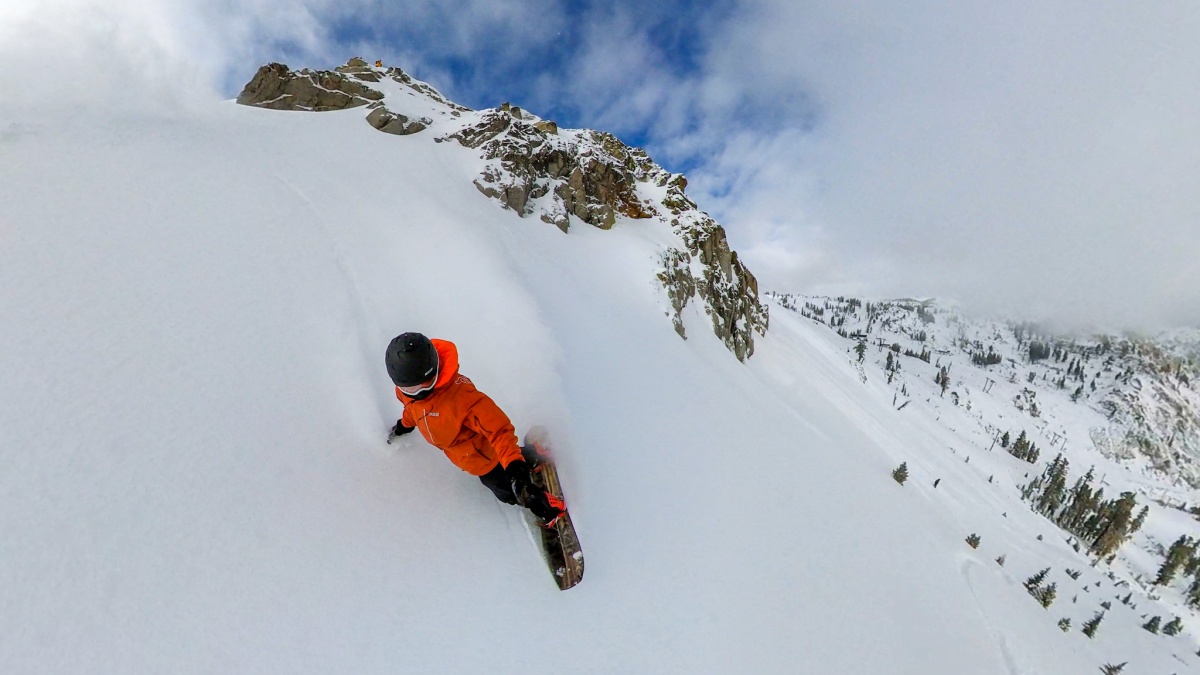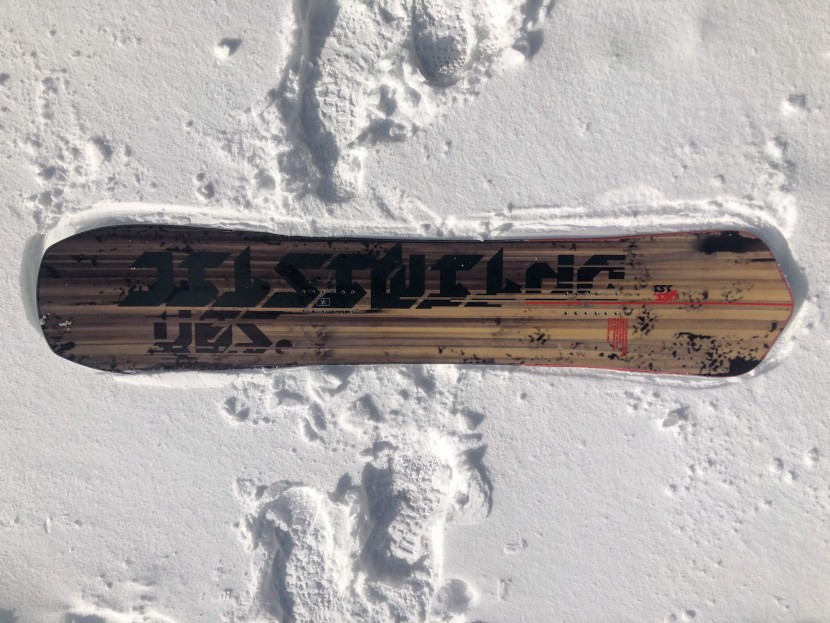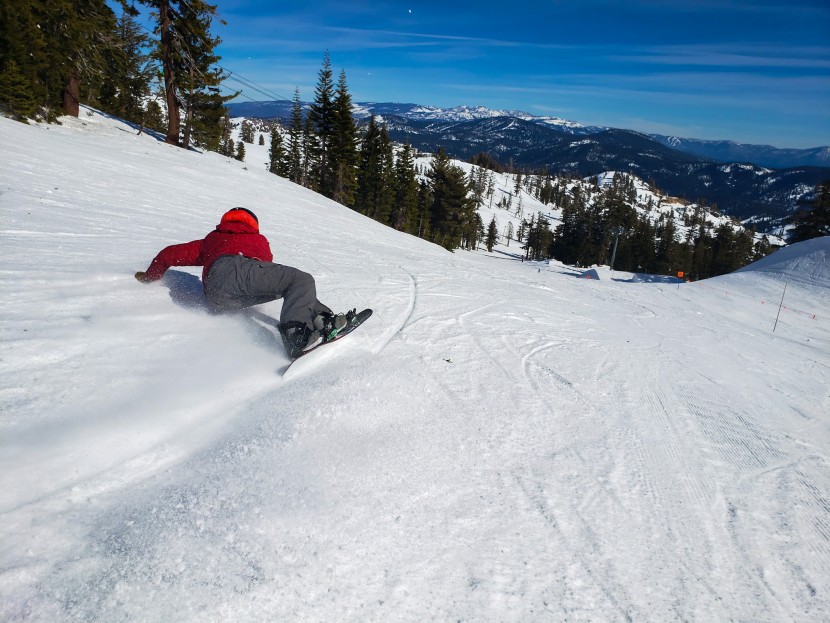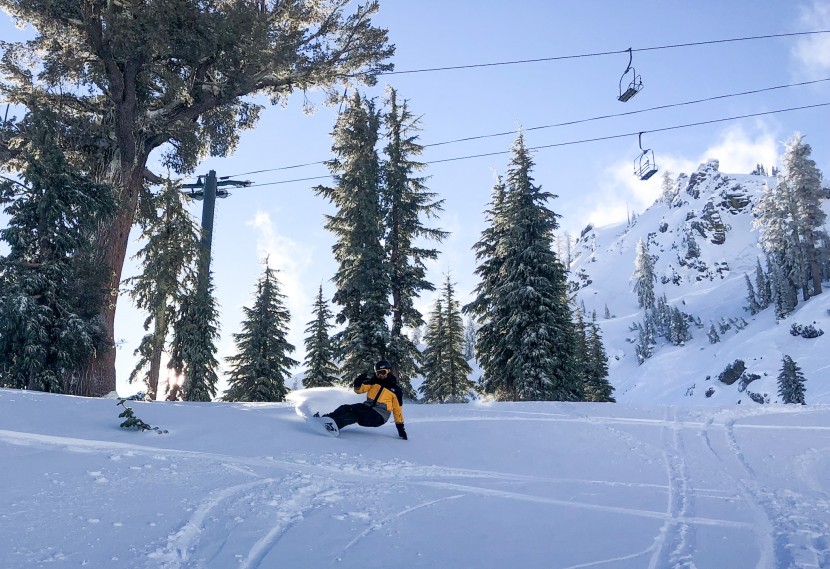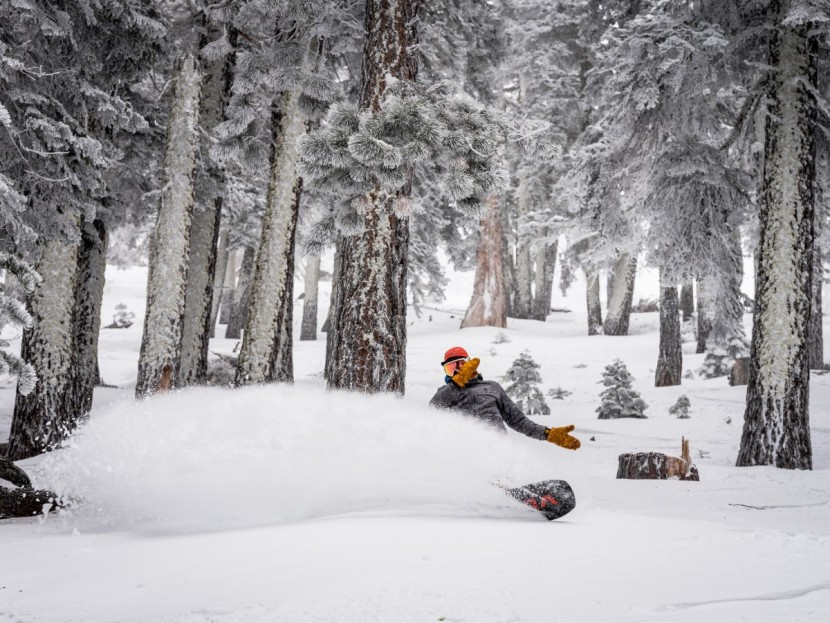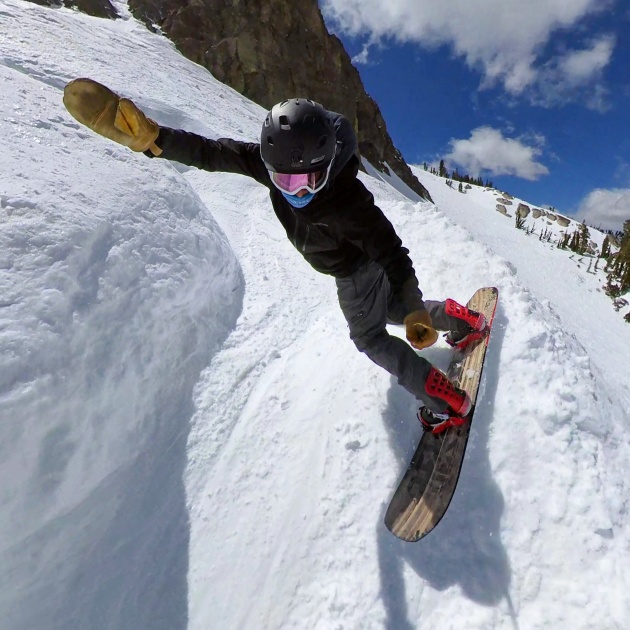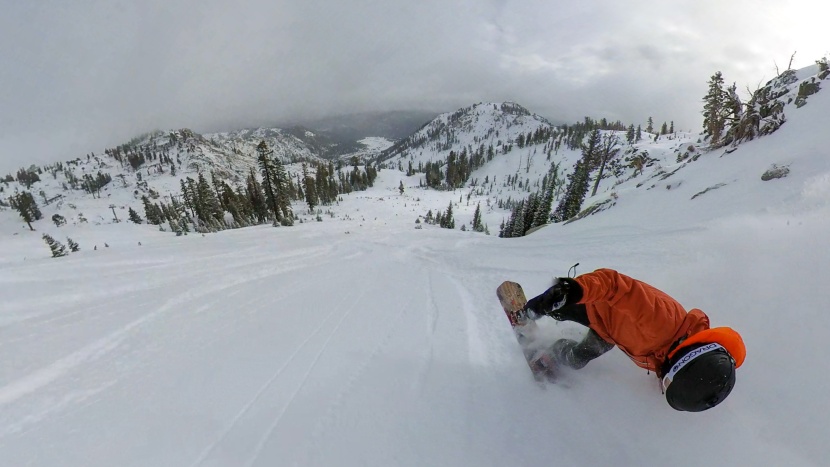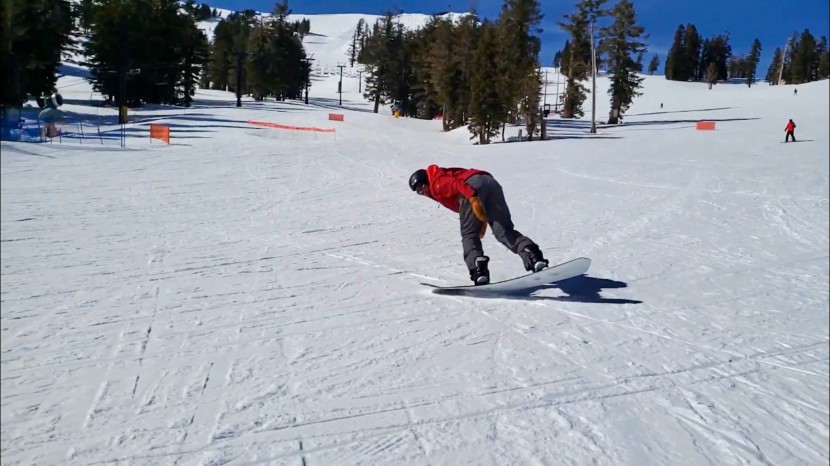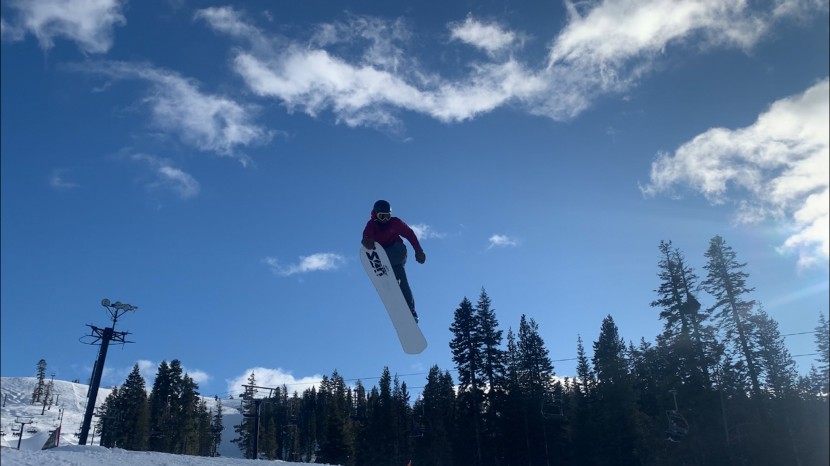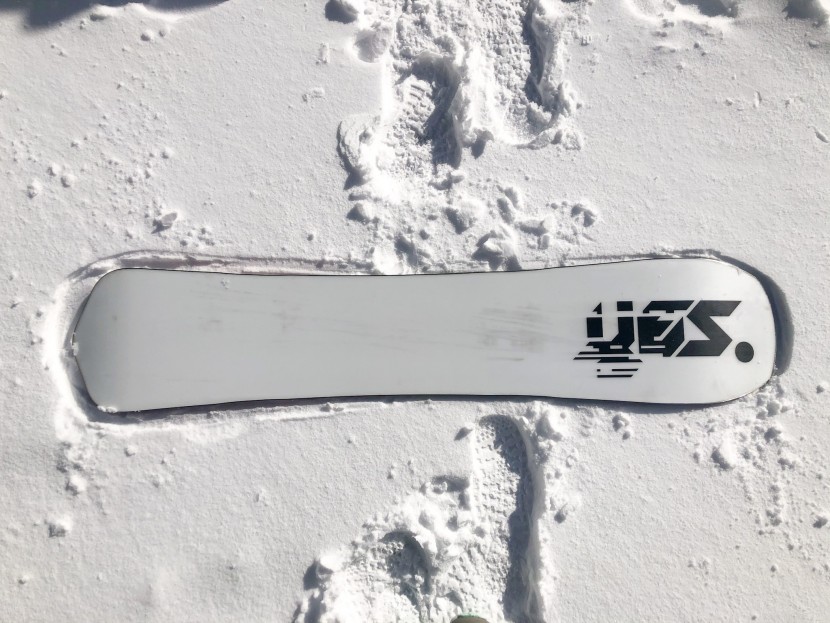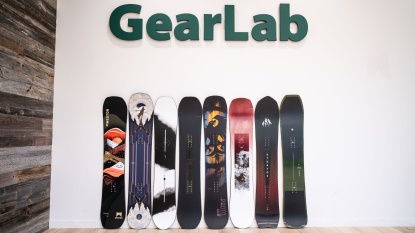Our Verdict
Our Analysis and Test Results
The Yes. Optimistic has a slightly more aggressive camber profile than its previous generation. This helps to reduce chatter and increase the stability at speed. Despite it being a 9 out 10 on the flex scale, this board has a fluid flex that has a lot of snap. It uses Yes.'s Carbon Powerdrive 2.0 core. The goal of this core is to maximize the power and energy within the board. It also employs bamboo and poplar wood stringers with embedded carbon inserts that run parallel to the sidecut. This core had power, snap, and rebound. The Optimistic's shape is different from the rest, and its performance is distinctive.
Edging
At first glance, the Optimistic looks very powder-specific. However, it carves like a Formula One car, holding tight and long turns with precision and power. Our testers felt they could make turns they have never been able to make, particularly the nuanced and challenging heelside turn. The wider waist width makes it slower to roll on edge. Turn initiation is still easy but requires patience at slower speeds. When you can engage the camber and pop out of each turn, the transitions become weightless and rather fast. The main benefit of the width is to manage toe drag for larger foot riders. This model has a stiff torsional (side-to-side) flex pattern to provide a stable and strong turning platform. A platform that you can trust helps you get deeper and accelerate out of your turns.
To help your turn radius, the Optimistic has one of the tightest sidecuts available in the category. We felt we could make the tightest and most symmetrical turns on both our toes and heel with this board in all conditions. On the firmest of surfaces, it provided secure edge hold thanks to its Underbite Technology. Underbite is a form of edge disruption (an intentional inconsistency in the sidecut) to provide additional grip in firm conditions. Although it didn't perform as well as Magne-Traction, it offered more security than the standard edge. The Underbite is one of the few edge indentions (rather than protrusions) on the market. Our testers really liked this style of displacement. It accomplished its goal of increased edge hold. The poplar and bamboo core and undercut made for quick and energetic turning character when engaged.
This board can absorb and release lots of power. We were thrown out of some turns because of the amount of power that was actually in the turn that we couldn't feel. There is a skill level threshold to unlock its potential. The Optimistic is not meant for beginners, but it's a perfect option for upper-level intermediates and beyond. It generally feels rigid and stable rather than playful when turning. It is possible to skid turns, but it takes a bit of effort and is far from what this board does well.
The Yes. Optimistic really shines on smooth snow. While this board is incredibly capable off-piste, its edging in uneven terrain takes more effort and planning but slower turn initiation. It still provides excellent edge hold on ice and hard pack. If you want to ride bumpy, off-piste terrain all day, you will be served better by other models.
If you're looking for a hard carver, it's a great choice. It provides a diverse turning character that can be strong and stable but also energetic and poppy. The ability to hold tight radius turns was unparalleled.
Float in Powder
While it excels on edge, the long rockered nose and natural setback provide the floatation expected from its powder-specific shape.
The uplifted contact points from the rockered profile and length of nose allows the front of the board to plane well. That way, you can keep riding powder rather than tomahawking, shaking out your jacket, and risking injury. The Optimistic has a 6mm taper meaning the nose is wider than the tail by that measurement. As a result of the different surface areas, the tail will naturally sink further in the snow.
It has a unique and surf-inspired diamond tail to promote the float and maneuverability of the board. This model shined bobbing through trees and also performed longer turns and higher speeds. The nose is plenty stiff to resist buckling at a mix of speed and snow densities. We found this board to provide an unreal, user-friendly, and nimble powder experience that would keep us on the mountain for two reasons; lack of rider fatigue and the sheer amount of fun.
Stability at Speed
The Optimistic is often downsized in length. The wide waist width and proportionately adapted effective edge make it ride bigger. Here we tested the 151cm model, but it had the on-snow feel of a 157/158cm freeride board. It is capable at speeds but can develop moderate chatter on firm bumpy surfaces.
The stiff, mostly camber profile provides good stability for those that charge directly down the fall line. It prefers to make small quick turns or beautiful arcing turns down the smooth snow. The Optimistic held high-speed turns with ease and security. We rarely felt we were going to lose edge hold in long-radius or short-radius turns.
In uneven terrain, the Yes. Optimistic has decent damping and held its line pretty accurately. Small corrections took more effort due to its reduced mobility. This model provided all the stability we feel most riders need and require.
Playfulness
This is a stiff board, yet it breaks the general rule that stiff boards are less playful. It was one of our favorite models to butter and make powerful surf-styled slashes around the mountain. We found it incredibly versatile, but it must be sized correctly.
According to Yes., you should downsize from your traditional snowboard to unlock the true versatility of this model. We can support this statement from our experience, as well.
The wider waist width and effective edge allow the board to ride bigger when connected to the snow and still have good mobility. The long and mostly cambered nose locks into presses well and allows you to place a lot of your weight into the nose without toppling over. The opposite goes for the tail. Tail presses and butters are challenging due to the short and stiff tail, although the tail shape helps to disengage the tail to slash around. The Optimistic surprised our testers with its versatility, buttering, and slashing abilities, especially considering its flex.
Pop and Jumping
If you are used to popping and landing on a twin tip, be patient; popping off of a shorter tail takes some adjustment. It's a tighter margin in every step. Once we adapted, our testers found the pop generated from the camber surprising and plentiful.
The poplar and bamboo cambered core offers good energetic pop that took some user effort to harvest. Built into this metric is landing security. This also took some adapting to figure out the shorter tail. We had a smaller margin for error when landing in the back seat than most models in the review. At times we could save these landings, and other times we would wash out. The tail is stiff enough that we could catch ourselves when landing off balance, but it lacked the stability of some other models. However, once you're tuned into this board's popping and landing style, it is pretty darn good.
Value
The Optimistic is a premium-priced snowboard that backs up its price tag with its ability. Being one of the best-performing models we find it is worth the price.
Conclusion
The Yes. Optimistic is our favorite carver in the review and provided a high-quality experience all over the mountain. It was a stand-out performer in edging, float in powder, and playfulness; that alone makes it an awesome board. This is a great board for the smooth snow rider who spends most of their time in quest of the deepest carves and powder or someone looking to round out their quiver with a carving machine. In our testing, the Optimistic outperformed the competitors in the overall ranking system. If this board type fits your riding style, you should probably go buy it; at the very least, add it to your list of potentials.


